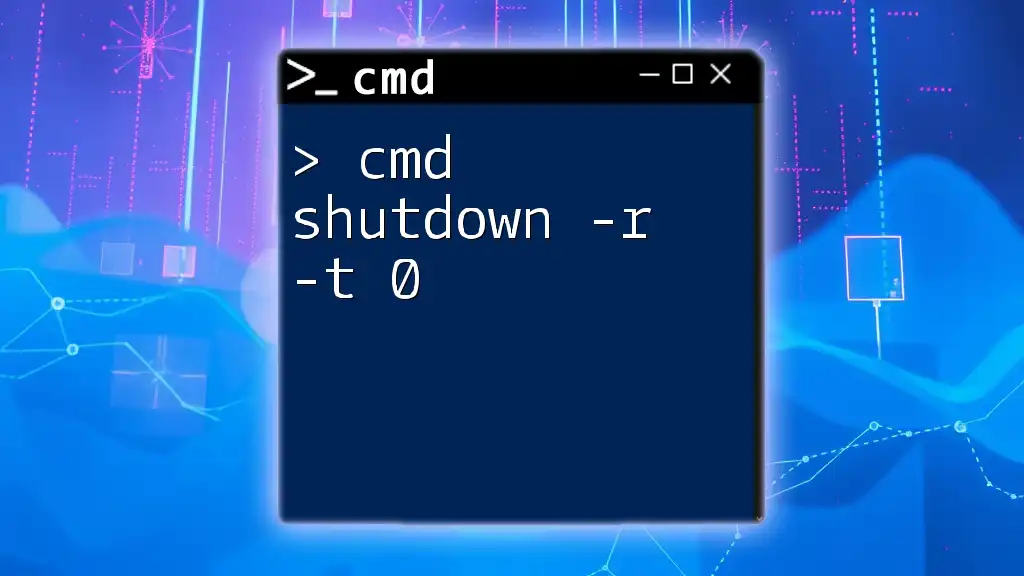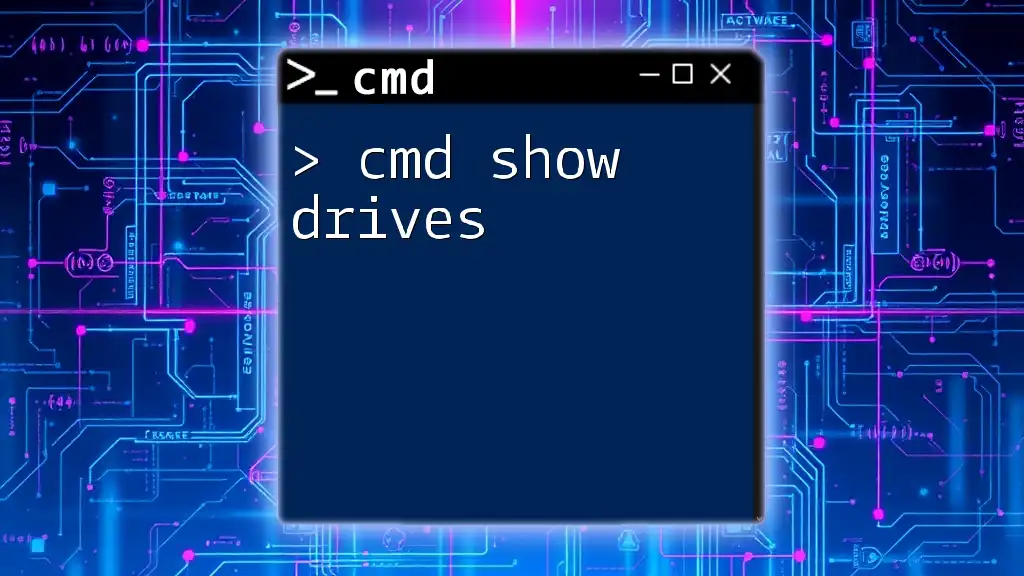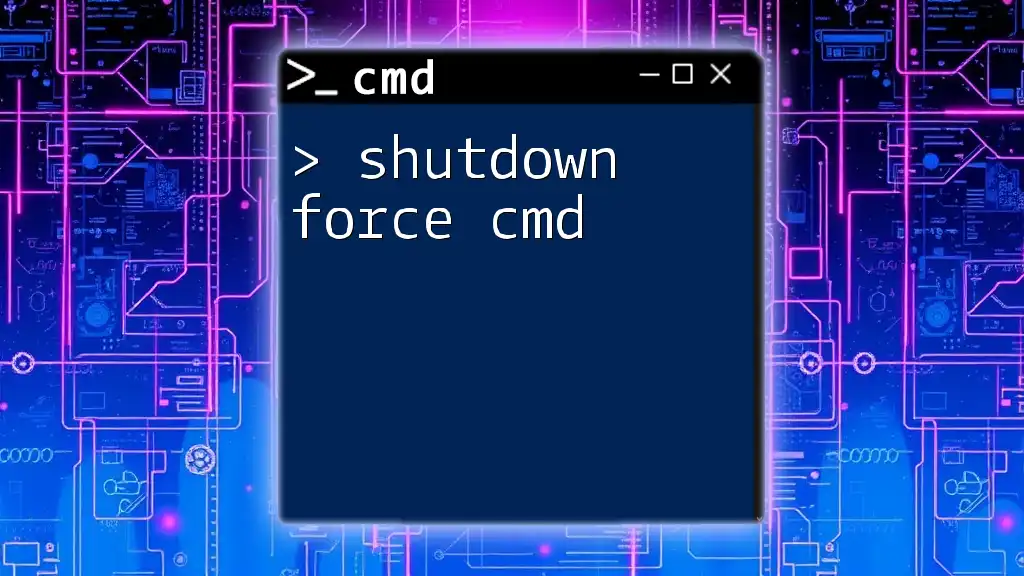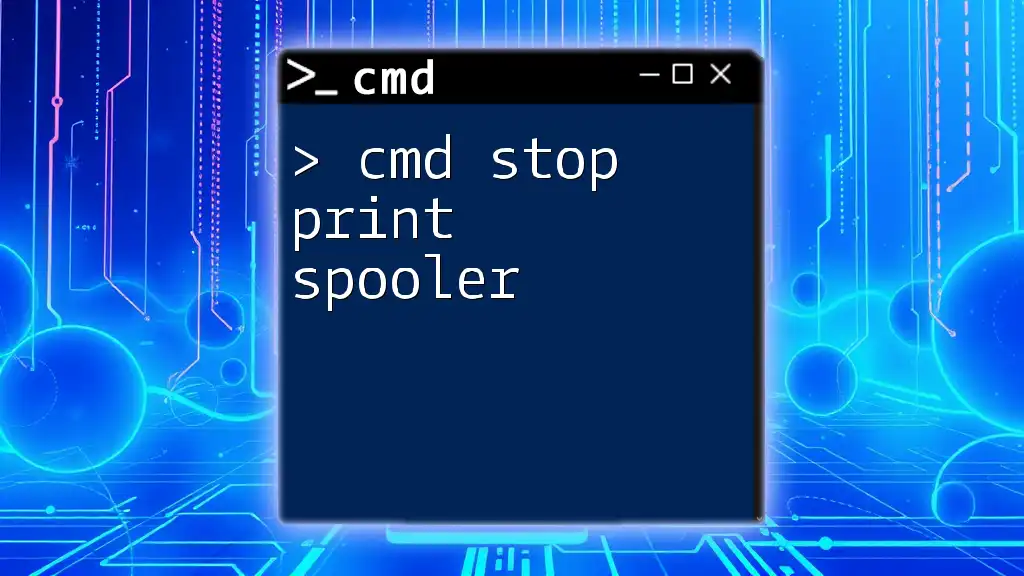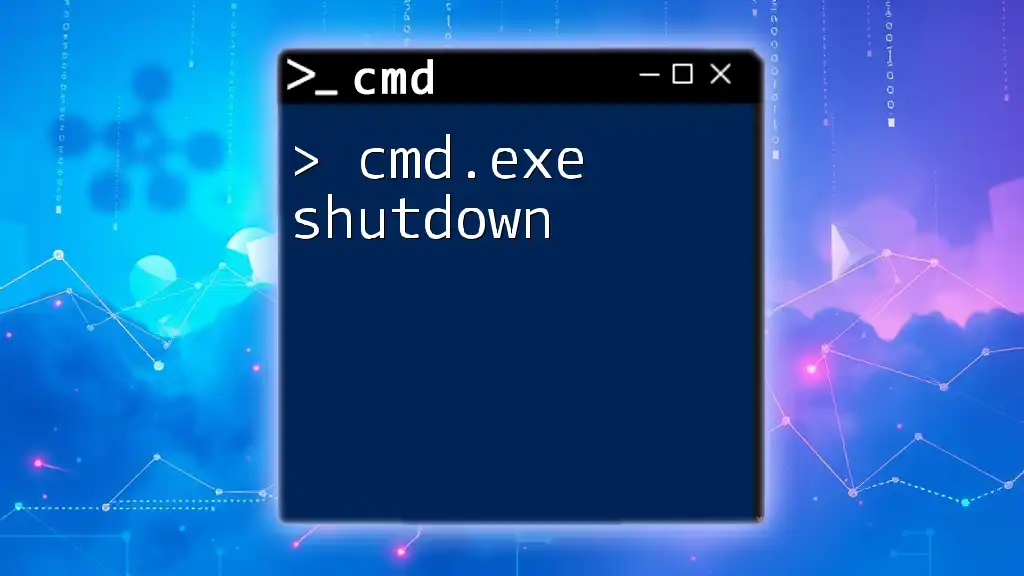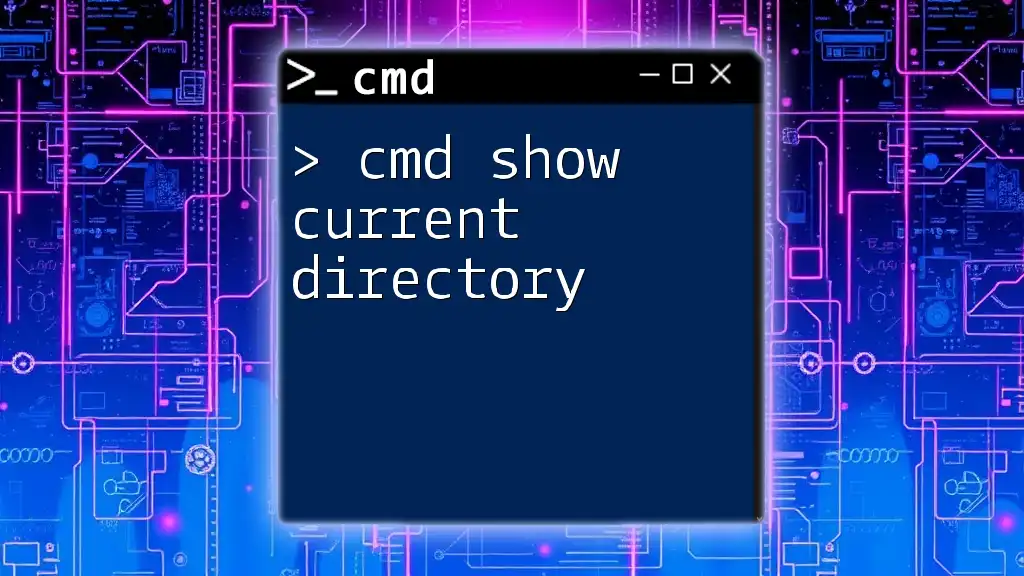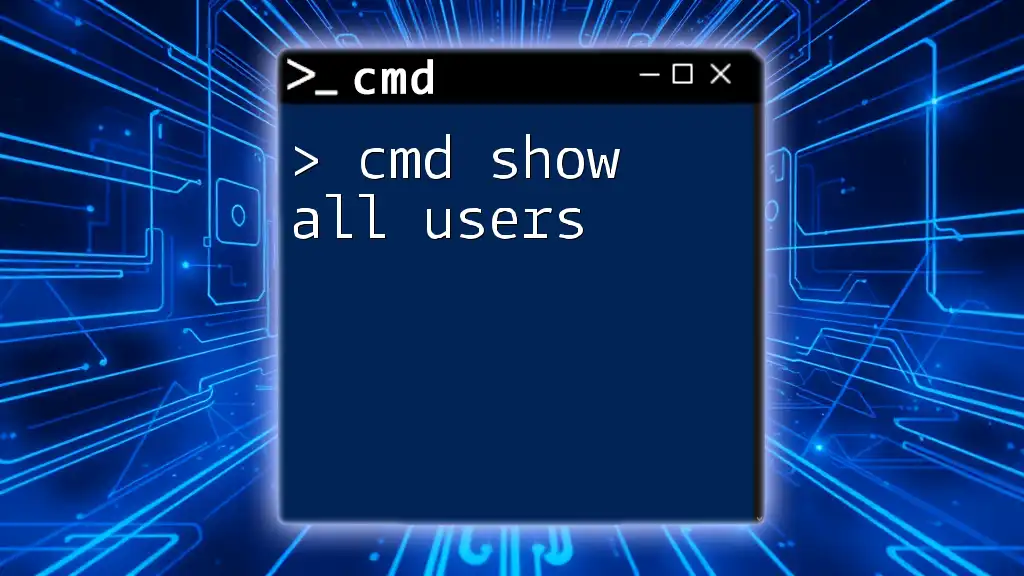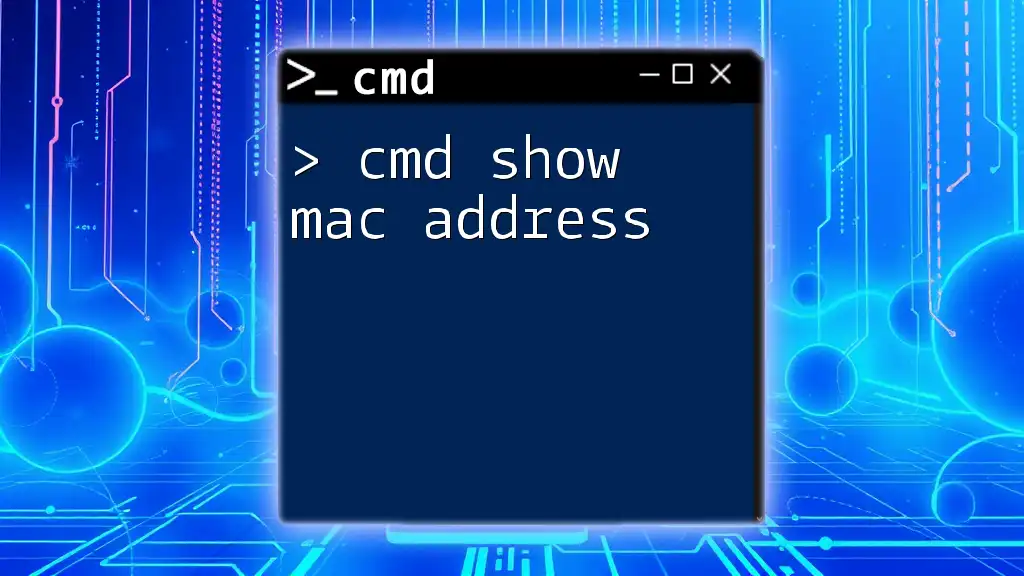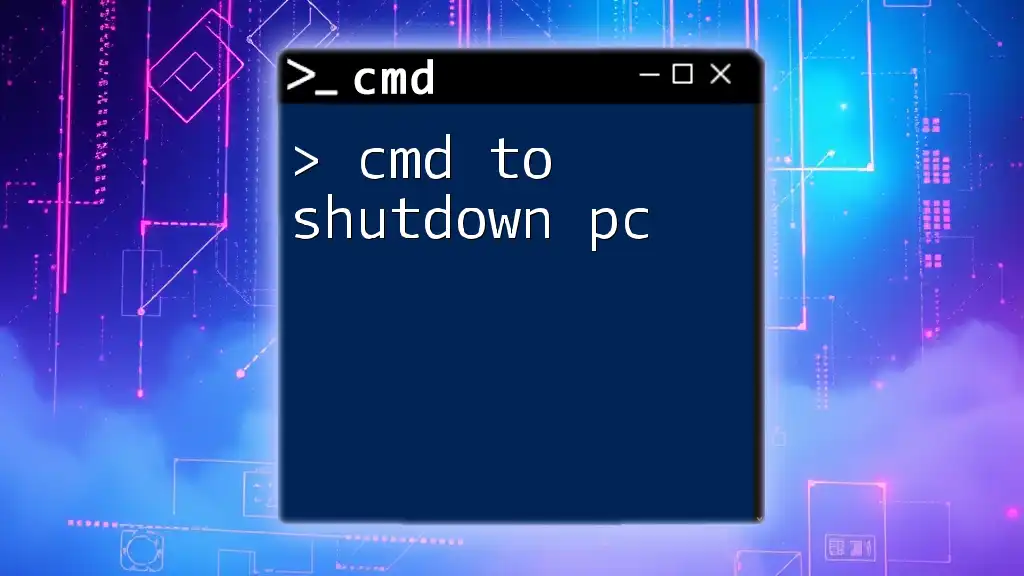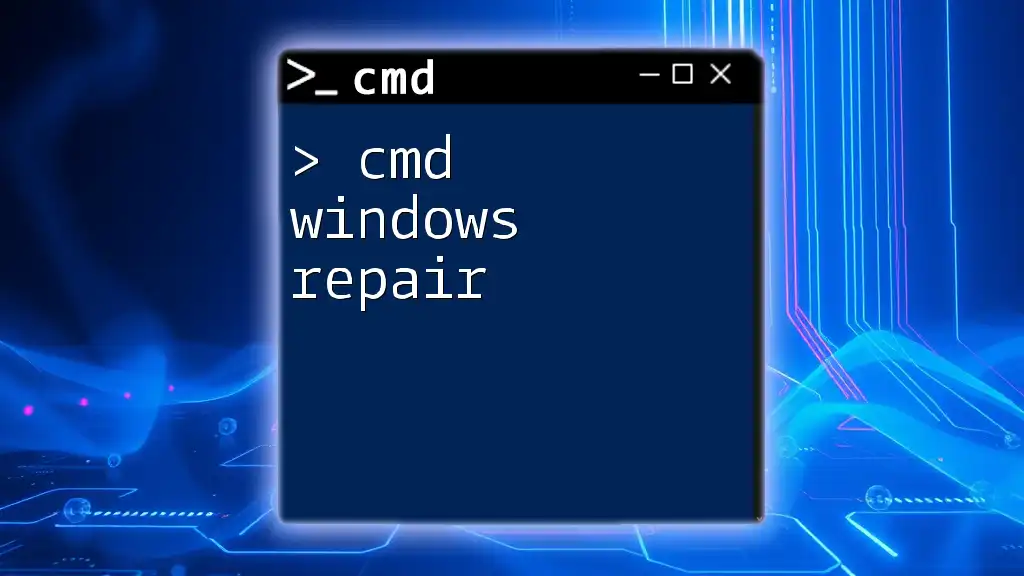The command `shutdown -r -t 0` instantly restarts the computer without any delay.
shutdown -r -t 0
Overview of CMD Shutdown Command
What is the CMD Shutdown Command?
The CMD (Command Prompt) shutdown command is a powerful tool used to manage system power options directly from the command line interface. It provides users a way to shut down, restart, or log off from their Windows operating system without needing the traditional graphical user interface (GUI). Understanding how to use this command can be especially beneficial for system administrators, power users, and anyone seeking to enhance their command-line skills.
Why Use the Shutdown Command?
Using the shutdown command offers several advantages compared to traditional shutdown methods. It allows for:
- Automation: The ability to script shutdown and restart processes, saving time and reducing manual tasks.
- Finer Control: Users can specify options like delaying shutdown or performing restarts in a specific order.
- Remote Management: The command can be used to manage other computers over a network, making it invaluable for IT professionals.
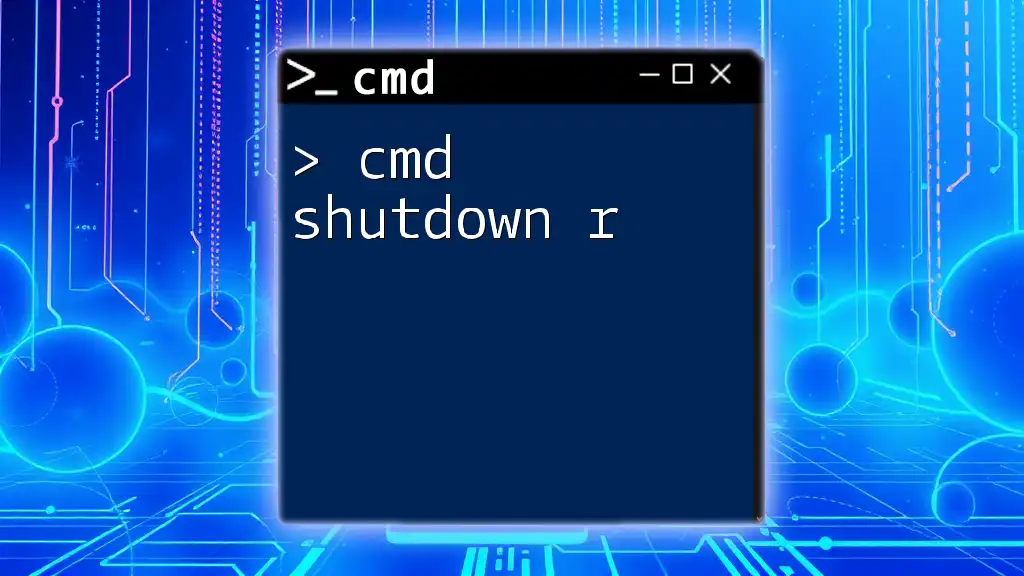
Breakdown of the Command: `shutdown -r -t 0`
Understanding the Syntax
The command `shutdown -r -t 0` utilizes a specific syntax to execute its functions efficiently. Breaking down the components:
- `shutdown`: This is the base command that triggers a shutdown or restart procedure.
- `-r`: This option denotes that the command will restart the computer rather than just shutting it down.
- `-t`: This option allows users to define a timeout period before the shutdown or restart occurs.
- `0`: Setting this to zero means the restart will take place immediately, without any delay.
Explanation of Parameters
The `-r` Parameter
The `-r` parameter is critical as it specifies the action of restarting the system. This is particularly useful in scenarios such as:
- After installing new software or updates that require a reboot.
- Recovering from system instability where restarting might resolve issues.
- Reapplying configurations that take effect only after a restart.
The `-t` Parameter
The `-t` parameter allows you to set a timer before the command is executed. Specifying `0` means:
- The command will execute immediately, ensuring quick responses during urgent updates or repairs.
- In contrast, setting a positive integer (like `60`) would provide a countdown before the system restarts, allowing users to save work or close applications.
Practical Example of the Command
Here is how you can execute the shutdown command for an immediate restart:
shutdown -r -t 0
When you run this command in CMD, the system initiates an immediate restart, closing all applications and processes without delay.
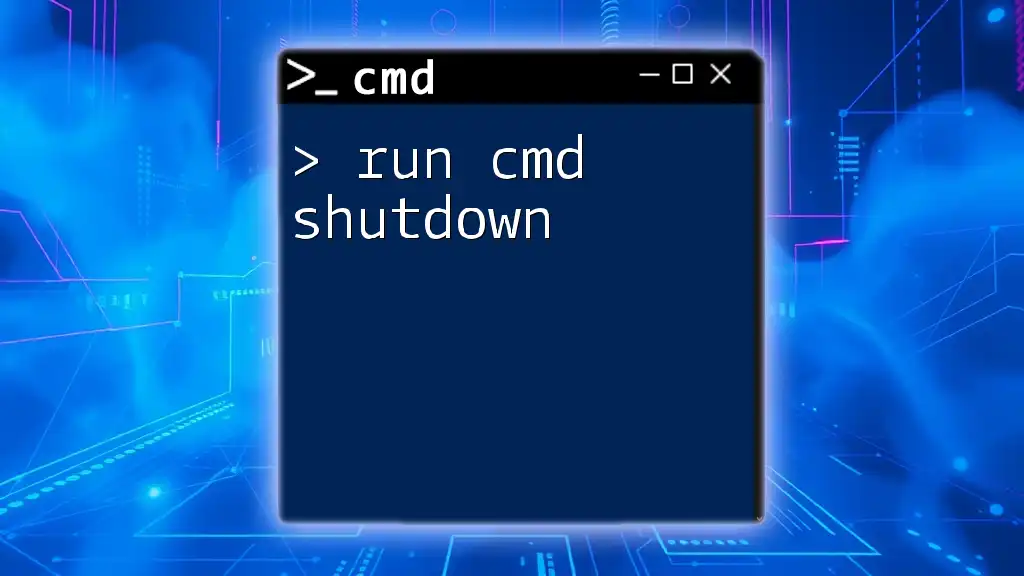
Common Use Cases for `shutdown -r -t 0`
Immediate Restarts for System Updates
One common scenario where `shutdown -r -t 0` proves invaluable is during the installation of system updates that require a reboot. By using this command, you can automate the process of restarting the system after updates are installed. This can be set up to run as a part of a scheduled task, ensuring that your system remains up-to-date without manual intervention.
Remote System Management
The versatility of this command extends to remote system management. Network administrators can execute restarts on remote machines with the following command syntax:
shutdown -r -t 0 /m \\RemotePCName
In this code, replace `RemotePCName` with the name of the target machine. This enables efficient management of multiple systems in an organization, reducing the need to physically access each computer.
Troubleshooting Tips
Using the `shutdown -r -t 0` command can also play a critical role in troubleshooting. Here are scenarios where utilizing this command can be beneficial:
- When software malfunctions demand immediate restarts to apply fixes.
- Resolving system sluggishness by refreshing the operating environment.
- Quickly rebooting after testing new configurations or software installations.
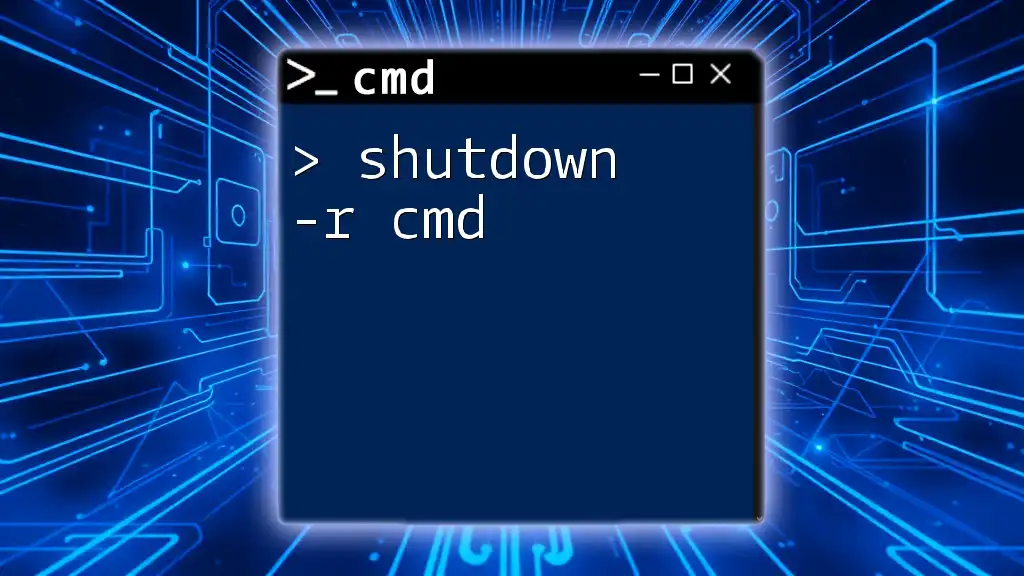
Safety Precautions When Using Shutdown Commands
Understanding Potential Risks
While the `shutdown -r -t 0` command is powerful, it carries inherent risks. Data loss can occur if applications are not closed properly when the system restarts. Considerations include:
- Users may lose unsaved work.
- Running processes may be terminated abruptly, resulting in lost progress.
Best Practices
To use the command responsibly, adhere to the following guidelines:
- Always notify users before initiating forced restarts, especially in a multi-user environment.
- Consider implementing a countdown timer (e.g., `shutdown -r -t 60`) instead of setting it to `0`, allowing ample time for users to save their work.

Conclusion
Recap of the Command's Importance
The command `shutdown -r -t 0` serves as a fundamental tool for system management and control. Whether you're applying updates, managing remote systems, or troubleshooting software issues, understanding this command can significantly enhance your efficiency and effectiveness when working in the Command Prompt.
Call to Action
Feel empowered to experiment with the `shutdown -r -t 0` command in a safe environment. Explore additional CMD commands and deepen your knowledge of command-line interfaces to maximize your productivity and skills. Stay tuned for more tips and tricks on mastering CMD!

